In a remarkable leap forward for science, researchers at CERN have successfully created and observed top quarks—one of nature’s most elusive and unstable particles—inside a lab for the very first time. This breakthrough, announced by the ATLAS team at the Large Hadron Collider (LHC), promises to reshape our understanding of the early Universe and the fundamental makeup of matter.
Category: innovation – Page 34
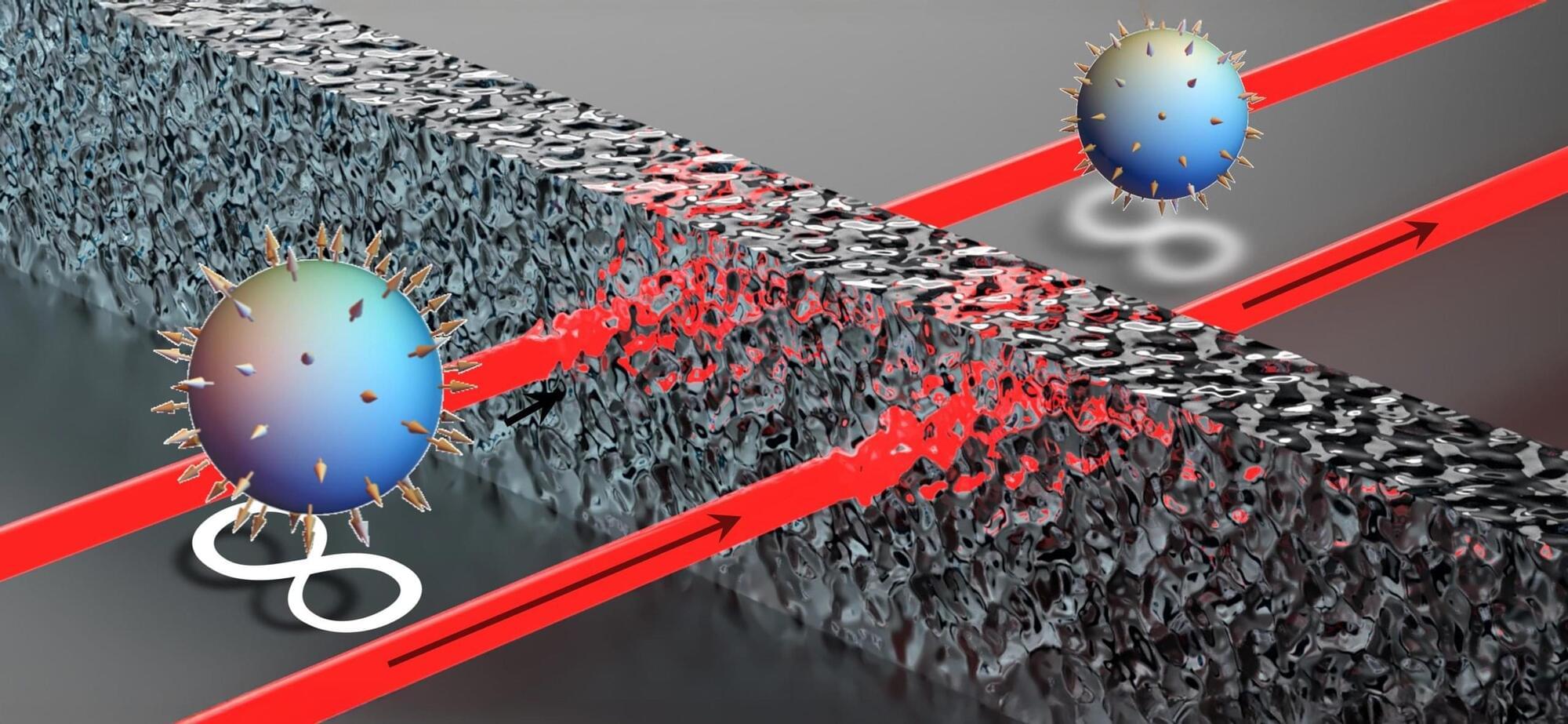
They just invented Bacta in real life
Thanks to breakthroughs in hydrogel material science, we now have material that functions similar to Star Wars Bacta.
2nd Channel: https://www.youtube.com/channel/UCICVgpk90CmHmQoX-vSSuZA
Follow Generation Tech on Instagram: https://www.instagram.com/generationtechofficial.
Follow Generation Tech on Facebook: http://bit.ly/GenerationTechFB
Latest Videos: http://bit.ly/LatestGT
Popular Videos: http://bit.ly/GTPopular.
Please help our channel by becoming a Patron: http://bit.ly/GTPatreon.
Follow our Host.
ALLEN XIE
YOUTUBE https://www.youtube.com/channel/UCrc275yYmYcj9x275_OtSIg.
INSTAGRAM AXIEFILMS
TIKTOK AXIEFILMS
FACEBOOK https://www.facebook.com/AxieFilms/
HM Amit Shah Replies in the Lok Sabha on Tribhuvan Sahkari University Bill, 2025. (26 March 2025)
The new era of cooperative education in india!
“Tribhuvan” Sahkari University, through its innovative HUB-and-SPOKE model, will ensure nationwide reach and accessibility by integrating sectoral schools and leveraging strategic partnerships to build a robust Pan-India ecosystem of technical and skill development institutions.
Follow the link to join the programme ➡️
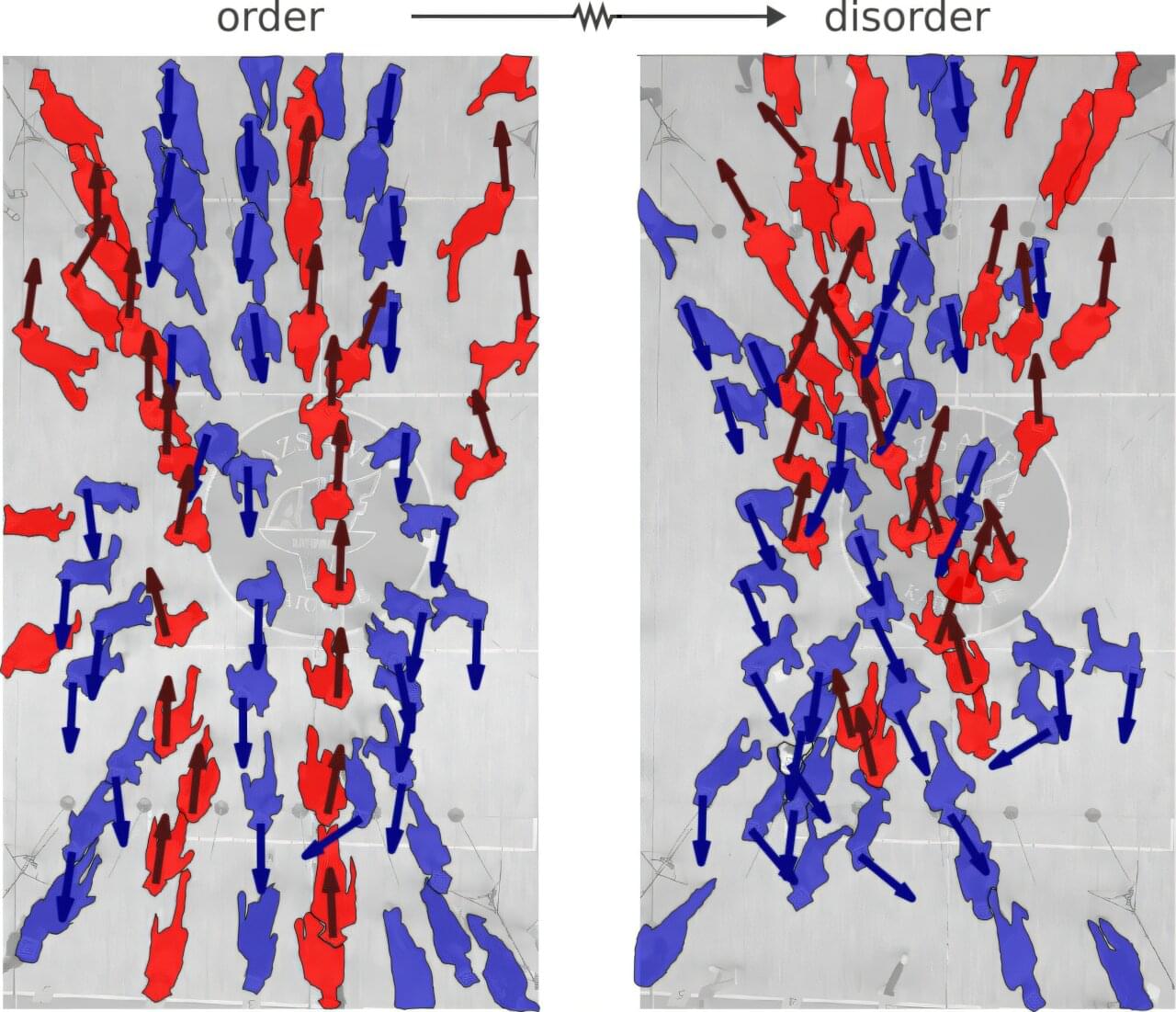
The secret behind pedestrian crossings—and why some spiral into chaos
Pedestrian crossings generally showcase the best in pedestrian behavior, with people naturally forming orderly lanes as they cross the road, smoothly passing those coming from the opposite direction without any bumps or scrapes. Sometimes, however, the flow gets chaotic, with individuals weaving through the crowd on their own haphazard paths to the other side.
Now, an international team of mathematicians, co-led by Professor Tim Rogers at the University of Bath in the UK and Dr. Karol Bacik at MIT in the US has made an important breakthrough in their understanding of what causes human flows to disintegrate into tangles. This discovery has the potential to help planners design road crossings and other pedestrian spaces that minimize chaos and enhance safety and efficiency.
In a paper appearing in the journal Proceedings of the National Academy of Sciences, the team pinned down the precise point at which crowds of pedestrians crossing a road collapse from order to disorder.
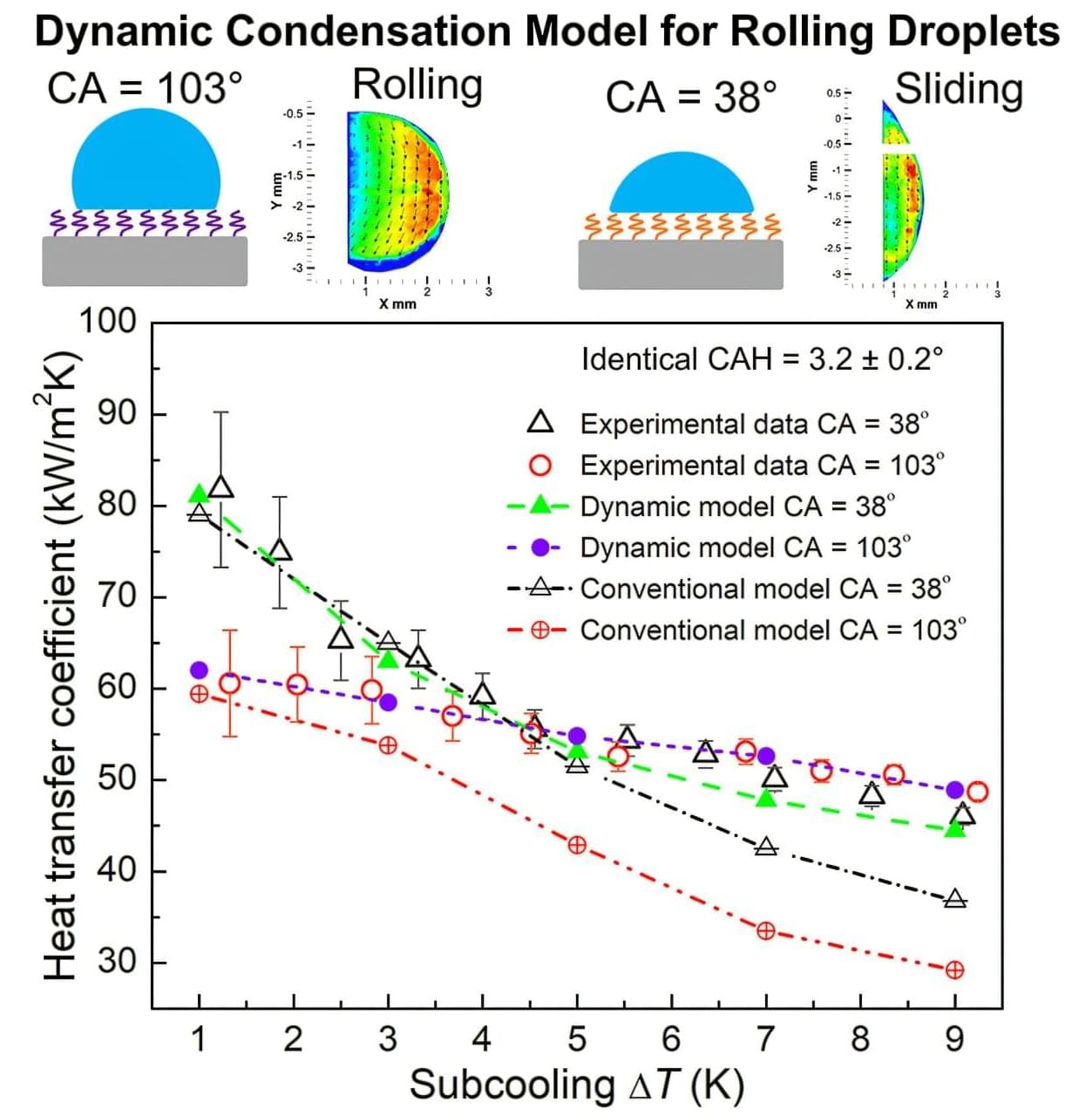
Engineers redefine how heat transfers on advanced surfaces
When University of Texas at Dallas researchers tested a new surface that they designed to collect and remove condensates rapidly, the results surprised them. The mechanical engineers’ design collected more condensates, or liquid formed by condensation, than they had predicted based on a classic physics model.
The finding revealed a limitation in the existing model and inspired the researchers to develop a new theory to explain the phenomenon, which they outline in an article published online March 13 in the journal Newton.
The theory is critical to the researchers’ work to develop innovative surfaces for applications such as harvesting water from air without electricity.

This Tiny Particle is Redefining Our View of the Atomic Nucleus
University of Queensland scientists have cracked a long-standing puzzle in nuclear physics, showing that nuclear polarization, once thought to hinder experiments with muonic atoms, has a much smaller effect than expected.
This surprising result clears a major obstacle and paves the way for a new era of atomic research, offering deeper insights into the mysterious inner workings of atomic nuclei using exotic, muon-based atoms.
Breakthrough in Muonic Atom Research.
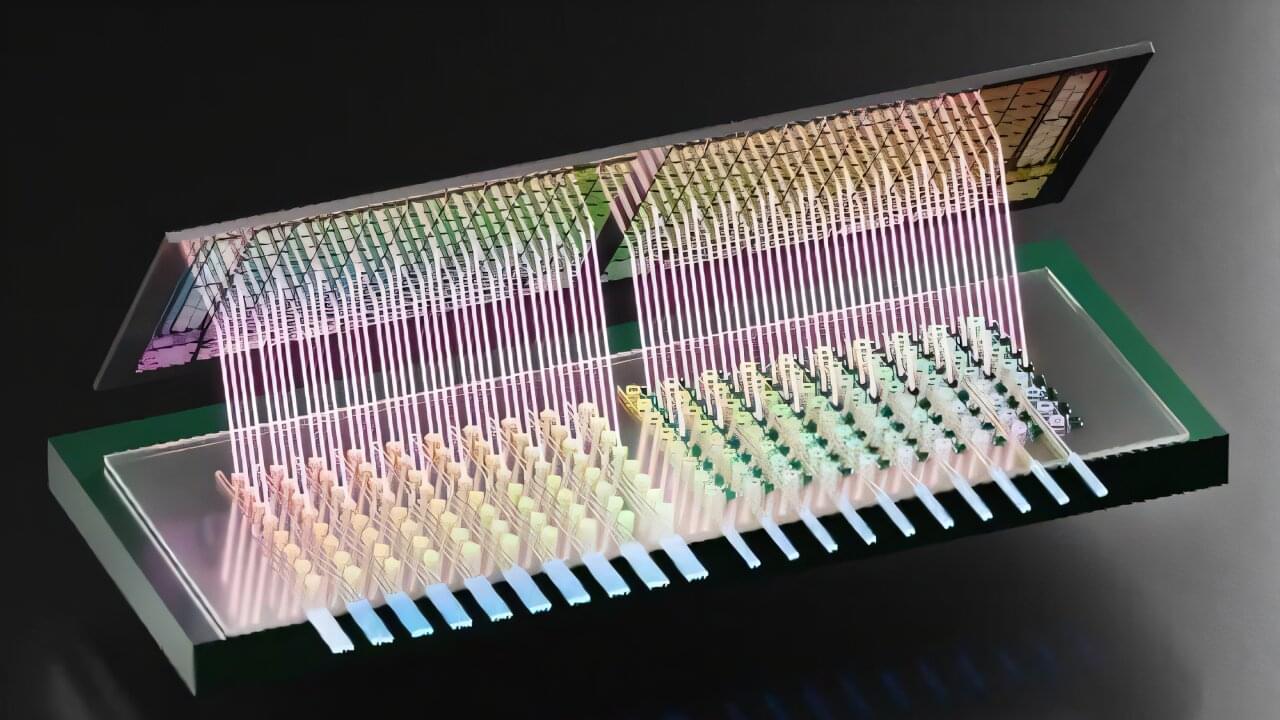
Next-generation AI hardware: 3D photonic-electronic platform boosts efficiency and bandwidth
Artificial intelligence (AI) systems promise transformative advancements, yet their growth has been limited by energy inefficiencies and bottlenecks in data transfer. Researchers at Columbia Engineering have unveiled a groundbreaking solution: a 3D photonic-electronic platform that achieves unprecedented energy efficiency and bandwidth density, paving the way for next-generation AI hardware.
The study, “3D Photonics for Ultra-Low Energy, High Bandwidth-Density Chip Data Links,” led by Keren Bergman, Charles Batchelor Professor of Electrical Engineering, is published in Nature Photonics.
The research details a pioneering method that integrates photonics with advanced complementary-metal-oxide-semiconductor (CMOS) electronics to redefine energy-efficient, high-bandwidth data communication. This innovation addresses critical challenges in data movement, a persistent obstacle to realizing faster and more efficient AI technologies.
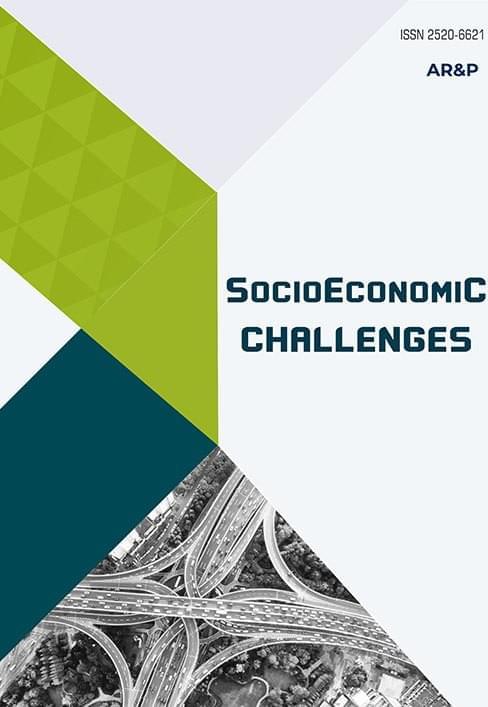
The Impact of Socio-Economic Challenges and Technological Progress on Economic Inequality: An Estimation with the Perelman Model and Ricci Flow Methods
Keywords: technological advances, economical inequality, GinI coefficient, Ricci flow, Perelman models, technological innovations, research and development, innovations, sensitive analyze, automatization, economic stability, socio-economic challenges.
JEL Classification: E22, O11, O32.
Cite as: Gondauri, D. (2024). SocioEconomic Challenges, 8, 161–175. https://doi.org/10.61093/sec.8.161-175.2024.
